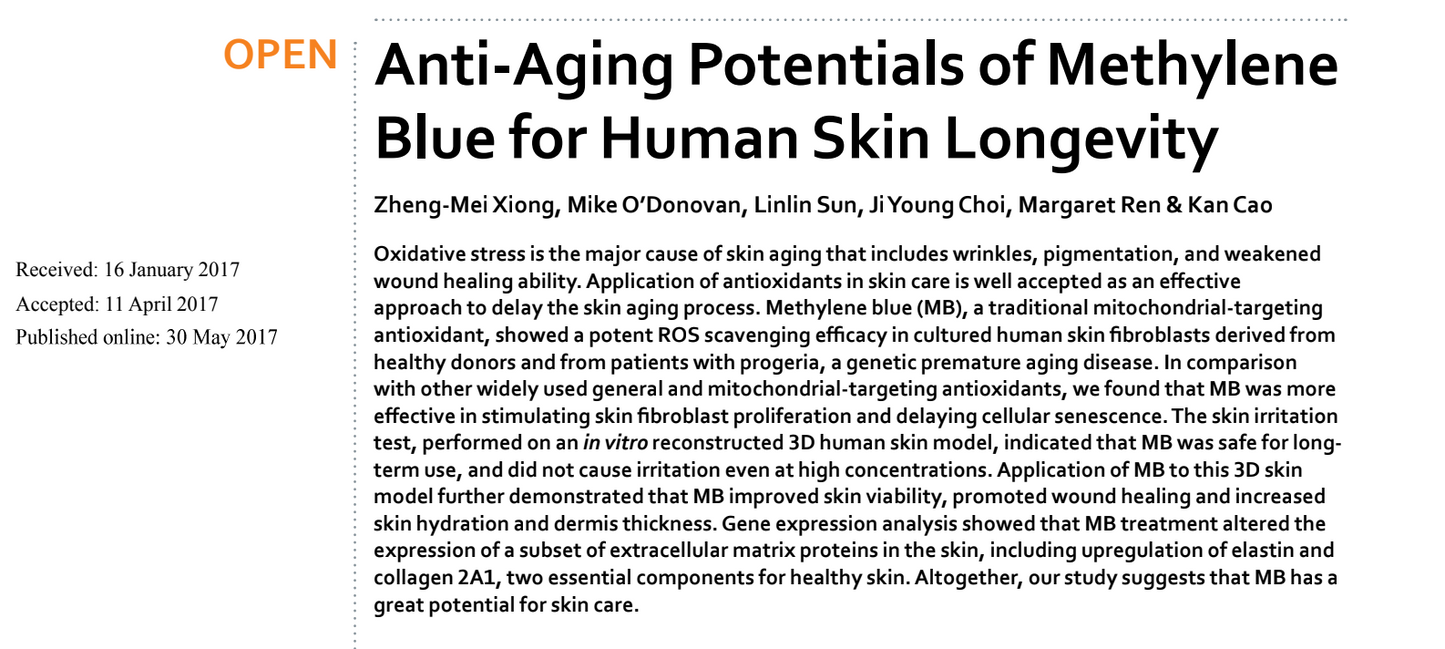Oxidative stress is the major cause of skin aging that includes wrinkles, pigmentation, and weakened wound healing ability. Application of antioxidants in skin care is well accepted as an effective approach to delay the skin aging process. Methylene blue (MB), a traditional mitochondrial-targeting antioxidant, showed a potent ROS scavenging efficacy in cultured human skin fibroblasts derived from healthy donors and from patients with progeria, a genetic premature aging disease. In comparison with other widely used general and mitochondrial-targeting antioxidants, we found that MB was more effective in stimulating skin fibroblast proliferation and delaying cellular senescence. The skin irritation test, performed...
Read more →
Research Summary: Natural substances have traditionally been used in skin care for centuries. There is now an ongoing search for new natural bioactives that not only promote skin health but also protect the skin against various harmful factors, including ultraviolet radiation and free radicals. Free radicals, by disrupting defense and restoration mechanisms, significantly contribute to skin damage and accelerate aging. Natural compounds present in plants exhibit antioxidant properties and the ability to scavenge free radicals. The increased interest in plant chemistry is linked to the growing demand for plant materials as natural antioxidants. This review focuses on aromatic and medicinal...
Read more →
Research Summary: Niacinamide is vitamin B3, an essential nutrient. In the body, it is converted to the co-factors NADH and NADPH, which are involved in many biochemical reactions. Dietary deficiency of this water-soluble member of the vitamin B family causes pellagra, a disease that includes dermatitis and red lesions. Pellagra caused thousands of deaths in the United States in the first half of the twentieth century, until simple dietary supplementation with this absorbable vitamin was found to cure the disorder.NAD+ and NADPH levels in skin cells decline with age. Thus, supplementing skin with the precursor to these vital co-factors has...
Read more →
Research Summary: The last two decades have seen an increase in active-led skin care products in over-the-counter and retail marketplaces. Consumers have become more knowledgeable about the ingredients used in topical products, resulting in formulations with vitamins and other active ingredients gaining popularity. Further, with the need for instantaneous and short-term benefits, consumers are moving towards high doses of active products. This poses a challenge for formulation scientists to stabilize high active doses and ensure potency over the shelf life. Vitamin C, or ascorbic acid, is one such ubiquitous active commonly found in topical products claiming brightening, skin firming, and...
Read more →







